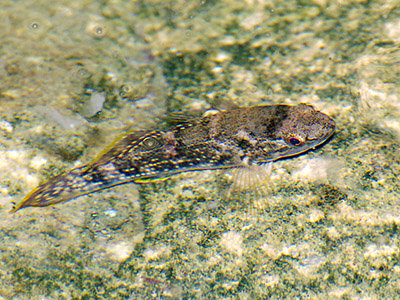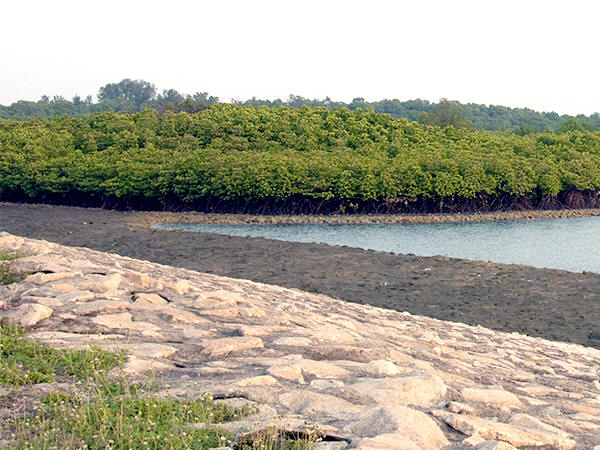
Fig 1

Fig 2
|
Order : Perciformes
Family : ELEOTRIDAE
Species : Butis koilomatodon
Maximum Length : 10.7 cm
Butis koilomatodon
(Crested Gudgeon, or Mud Sleeper) inhabits estuarine waters of varied
salinity and varied substrate, including rocky substrate with crevices in
which these fish can shelter. Its diet comprises crustaceans and small
fishes (Fishbase).
This small gudgeon can be identified by its short, flattened head with a
broad, dark bark at the rear of the skull. It is mottled brown, with pale
specks, and vague oblique bands. The pectoral and anal fins may be
pale-edged.
This species is wide-ranging; it naturally occurs from East Africa, through
the Indian Ocean and Southeast Asia to China, the western Pacific Ocean and
northern Australia. It has been accidentally introduced to other parts of
the world including West Africa and South America.
It has been found in tide pools in Brazil (Bonfim et al, 2017). The
ecological consequences of such introductions may result in native fish
being outcompeted by the invader. Introduction has probably occurred due to
international shipping activity; this hardy, adaptable fish may easily be
transported in ballast tanks.
Fig 1 : Example from
Singapore, on a man-made, rocky bund at the edge of mangrove habitat on
Pulau Semakau.
Fig 2 : Man-made granite bund and rocky foreshore, and newly planted mangrove on Pulau Semakau,
Singapore, which support a population of Butis koilomatodon. The
island is the site of Singapore's landfill facility, where incinerated
refuse is buried.
References :
Larson, H.K. and Lim, K.P. 1997. A Guide to Gobies of Singapore. Singapore
Science Centre.
Mariana Bonfim, Ana Paula Barbosa Martins, Glinia Kelle Fernandes Coelho de
Carvalho, Nivaldo Magalhães Piorski & Jorge Luiz Silva Nunes (2017).
Non-native mud sleeper Butis koilomatodon in Eastern Amazon Coastal
region: an additional occurrence for the Brazilian coast and urgency for
ecological assessment. BioInvasions Record, 6(2): 111-117.
Links :
Fishbase
- Butis koilomatodon
|